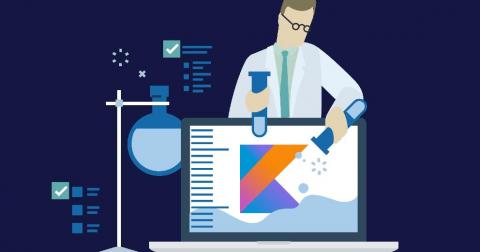Systems | Development | Analytics | API | Testing
Mobile
Updates from Bugfender Q1, 2020
Welcome to the spring Bugfender newsletter. Despite COVID-19 and thanks to being a remote company, we continue working on Bugfender to bring you new updates and features you can take advantage of. Bugfender is now hosted in twin datacenters. With a combination of High Availability and Master-Replica setups, we’re now able to process logs faster than ever and bring the service back up much faster in the unlikely event of datacenter-wide outages.
What are the characteristics of a Mobile DevOps environment?
Shipping the right app with the right functionalities to the right customer, at the right time is how you boost your ranking in the app store. Some of the key steps in this process are: continuously releasing high-quality software, listening to feedback, and providing new features to users — before they even know that they want them. To achieve all of this, app developers need two main things: automation tools and a growth mindset.
Fabric Crashlytics Log on Android and iOS
Ever since we started logging with Bugfender back in 2015, we’ve been working towards integration with Firebase, the app development platform created by Google. Firebase is famous for the breadth of its integration libraries and millions of people use the product around the world, drawn to its sleek UI and range of features. Our primary goal has been integration with Firebase Crashlytics Log, which underpins the entire platform.
What are Micro Apps on iOS?
How to Fix Crashing Apps on an iPhone or Android?
If you’ve got an app that keeps going down for no apparent reason, don’t worry, this quick and easy guide will give you the tools to get it up and running smoothly. To help you better, first select what type of user you are and what problem you have: If you’re not from the tech world yourselves, you probably think us programmers get everything right all the time.
Code coverage for Swift Package Manager based apps
The Swift Package Manager allows you to create standalone Swift applications both on Linux and macOS. You can build and run these apps and you have the ability to write unit tests for your codebase. Xcode ships with the XCTest framework, but you may not know that this is an open-source library. It's available on every single platform where you can install Swift.
How to Write Unit Tests for Kotlin
Writing tests is an underappreciated part of software development. It usually distracts us from our primary goal and makes us feel we aren’t being productive. However, these tests are a great way to ensure our code works as expected, and they can save us plenty of headaches when we don’t have full control of certain parts of a project (for example, when we are working on the client app and another colleague is working on the server).
Add the Bugfender SDK to an iOS app
How to adopt Mobile DevOps practices: mindset and technologies
Mobile DevOps is more than simply adopting a new set of tools and practices: it also comes with the need to adopt a completely different mindset, in the form of a cultural-organizational change. The approach is based on the Agile methodology, but takes its practices further: not only by getting other teams more involved, but by replacing function-based teams with product-, and project-oriented teams as well.











